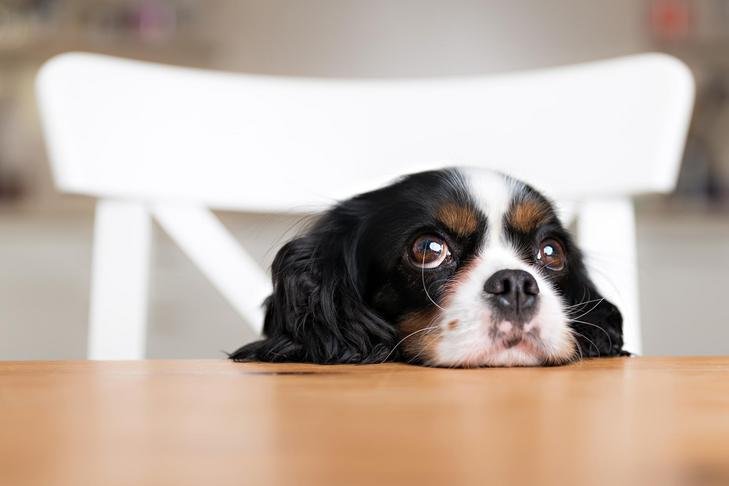Training a dog often conjures images of sit, stay, or fetching a ball. But beyond tricks and obedience lies a subtle, yet transformative behavior that dog owners, trainers, and groomers alike swear by—the chin rest. Though it may seem simple at first glance, this one skill has far-reaching benefits for your dog’s wellbeing, your peace of mind, and your ability to handle stressful situations with calm and cooperation.
Let’s explore what a chin rest is, why it matters, and how to teach your dog this surprisingly powerful behavior.
What Is a Chin Rest?
A chin rest is exactly what it sounds like—your dog calmly placing their chin into your outstretched palm and keeping it there until released. This can be done while your dog is sitting, standing, or lying down, and it can easily be transferred to objects like a sofa arm or a towel. It’s more than just a cute pose; it’s a way to cue your dog to remain still, focus, and engage with you voluntarily.
This simple position has become a go-to for therapy work, grooming, vet visits, and even basic calming exercises. Best of all, it fosters cooperation rather than restraint—an important shift in how we interact with our pets.
Why Should You Teach a Chin Rest?
At first glance, the chin rest might seem more like a party trick than a functional behavior. But it’s much more than that. Here’s why it’s worth your time:
1. Voluntary Cooperation
Unlike being held still or pinned down, a chin rest is a choice your dog makes. That difference matters. When your dog willingly engages in a behavior, they’re less likely to resist or feel stressed. In medical or grooming contexts—think eye drops, ear cleanings, or facial trims—that cooperation means smoother, less traumatic experiences for everyone involved.

2. Stress Reduction
When your dog learns that resting their chin means good things happen—treats, praise, a moment of calm—they begin to associate it with safety. This association can lower arousal levels, making it a useful tool for dogs who are reactive, fearful, or overstimulated. It’s a gentle prompt to take a breath and refocus.
3. Anytime, Anywhere
The best part? All you need is your hand. Whether you’re at the vet’s office or in the middle of a busy park, the chin rest becomes a portable pause button. It gives your dog a familiar way to ground themselves, and you a means of regaining control without confrontation.
Step-by-Step: How to Teach a Chin Rest
Training the chin rest doesn’t require fancy tools or years of experience. All it takes is patience, consistency, and positive reinforcement. You can use either shaping or luring techniques, depending on your dog’s comfort level and learning style.
Step 1: Introduce the Palm
Hold your hand palm-up in front of your dog, about chest level. If using luring, position a treat just above and behind your open hand. As your dog naturally moves closer to get the treat, mark (with a clicker or “yes”) when their chin hovers above your palm. Reward generously.
Step 2: Guide the Chin into Place
Now begin to lower the lure until your dog’s chin makes light contact with your palm. Mark and reward when contact is made. Don’t worry about duration yet—focus on reinforcing the positioning.
Step 3: Fade the Lure
Switch to an empty hand, holding it just as before. If your dog moves their chin into position without the treat present, mark and reward from your pocket or treat pouch. If needed, scent your fingers with a treat to prompt the behavior.
Step 4: Create a Hand Signal
Once your dog consistently offers the behavior, your upturned palm becomes the signal. Only add a verbal cue—like “chin”—once the dog performs the chin rest reliably with just the hand signal.

Step 5: Build Duration
Slowly increase how long your dog holds the position. Start with one or two seconds, then work up, mixing longer and shorter intervals to keep things relaxed and positive. Add a release cue so your dog knows when the behavior is over.
Step 6: Introduce Distractions
Once your dog holds the chin rest comfortably, start adding light distractions. Move your other hand near their head, gently lift an ear, or bring a grooming tool into view. Reward calm stillness.
Step 7: Combine Duration and Distractions
Finally, combine increasing duration with more realistic challenges. Can your dog hold the chin rest while you simulate an eye exam? Can they stay calm while a stranger approaches? With practice, your dog will learn to stay composed even under pressure.
A Trust-Building Tool, Not Just a Trick
The beauty of the chin rest lies in its simplicity. But more than that, it represents a shift toward cooperative care. You’re not just training obedience—you’re building trust. You’re showing your dog that staying calm and connected with you is always a good choice.
Whether your dog is a tiny lap pup or a large working breed, this skill can enhance their sense of security, reduce stress in high-stakes moments, and make routine care a more positive experience for all. With time, practice, and plenty of treats, the humble chin rest might just become one of the most useful things you’ve ever taught your dog.
So next time you’re looking for a meaningful behavior to teach, skip the high-five—and try the chin rest instead.


